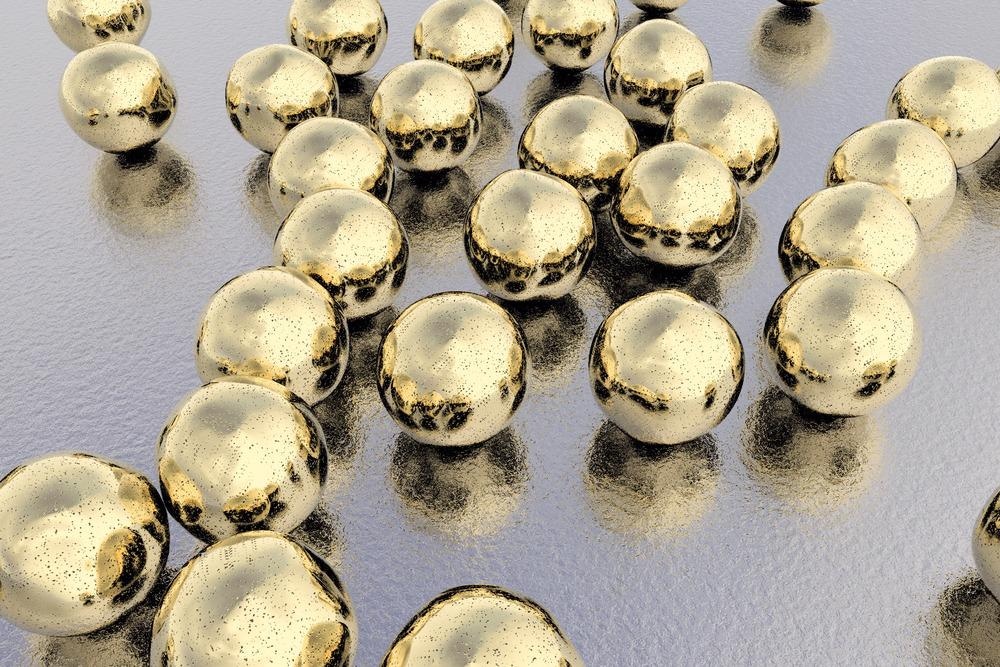A recent study published in the journal Optical Materials investigates and achieves a simple but innovative idea to enhance the performance of the MoS2/ZnO heterostructure photodetectors, by improving the localized surface plasmon resonance of Au nanoparticles.

Study: Simultaneous visible and ultraviolet photoresponse improvement of MoS2/ZnO heterostructure photodetector via direct resonant coupling of Au nanoparticles localized surface plasmon resonance. Image Credit: Kateryna Kon/Shutterstock.com
Improving Photodetection through LSPR
As a special characteristic of metal nanoparticles (NPs), researchers have extensively used localized surface plasmon resonance (LSPR) to improve the performance of devices that use optical detection. The identification of biochemical processes at a molecular level is one of the most common LSPR applications.
When photons fall on NPs with wavelengths smaller than that of the original wavelength, it gives rise to this optical phenomenon.
The electric field of the light that falls on the NPs can be used to provide more energy to electrons present in a conduction band, resulting in what are known as plasmon oscillations which are coherent and localized.
Photons can be trapped near the surface of metallic NPs due to this collective oscillation, resulting in an effective amplification of the localized field of electrons and dispersing of incident photons. This permits more photons to reach the photosensitive material, enhancing the material's light absorption capabilities.
More crucially, rather than escaping as free space light, photons dispersed by one metal NP can be captured as plasmons by surrounding metal NPs. However, the LSPR created by metal NPs placed on a single photosensitive material can only improve the optical response of a photodetector in a relatively restricted wavelength range. As a result, it became critical to investigate how to properly build the device structure and completely employ LSPR to concurrently increase this response of photodetectors over a wider spectral range.
Why Simple MoS2 Based Photodetectors Are Not Enough
Advancements in the development of electronics, optoelectronics, and photonics have created a strong requirement for new functional materials that are simple to synthesize, process, and fabricate, and that allow for desired customization of physical and chemical properties through chemical functionalization and the emergence of hybrid structures for use in both electronic and optoelectronic devices.
Transition metal dichalcogenides (TMDs)-based photodetectors have been widely documented in research, with molybdenum disulfide (MoS2) being the most thoroughly investigated for photodetection applications.
MoS2's features, such as direct band gap crossovers in low-dimensional structures, high light-matter interaction, and good carrier mobility, along with the ability to fabricate thin MoS2 films, have piqued interest in the field of optoelectronics.
However, owing to its poor photo absorption efficiency, MoS2-based photodetectors often display low responsivity and poor photoresponse speed under visible and ultraviolet light irradiation.
Many efforts have been suggested to increase the effectiveness of MoS2 based photodetectors to address these restrictions, such as heterostructure fabrication, crystal defect engineering, and piezo-phototronic effect.
The Simple Yet Brilliant Use of Metallic Nanoparticles
The study presents the development of an Au NPs modified p- MoS2/n-ZnO mixed-dimensional heterostructure photodetector, which can detect visible and ultraviolet (UV) light concurrently and sensitively.
Au NPs have been extensively studied for plasmonic energy, catalysis, optoelectronics, and sensor applications due to their high LSPR responses. Because of its high charge carrier mobility and effective UV light absorption, n-type ZnO is used in this heterostructure detector to create a fast charge carrier channel and perceive UV light. The P-type 2D MoS2 is in charge of detecting visible light.
Furthermore, the p-n junction created at the p- MoS2/n-ZnO interface allows photo-induced electrons and holes to be separated effectively.
Importantly, incoming light is trapped and the LSPR is induced using Au NPs placed on the surfaces of 2D MoS2 flakes and one-dimensional (1D) ZnO nanowire (NW) surfaces.
It was found that the photodetector's responsivity was boosted by more than six times under visible light illumination after Au NPs were added.
More crucially, the space depletion areas created at the Au/MoS2 and Au/ZnO interfaces of the junction not only reduce the photodetector's dark response but also enhance the separation efficiency of photo-induced electrons-holes at said junction.
As a result, the photocurrent (Ilight)/dark current (Idark) ratio and photodetector response speed were both enhanced in the visible and UV light areas.
This has far-reaching implications in terms of changing inherent properties of already existing materials to aid in photodetection.
Excitation of LSPR bands allows for enhanced and tunable electromagnetic fields, light absorption, and scattering dependent on the physical and elemental properties of NPs, implying improved device performance.
Continue reading: Understanding Plasmonic Nanoantennas.
Reference
Zhang, J., Zhang, X., et al. (2022). Simultaneous visible and ultraviolet photoresponse improvement of MoS2/ZnO heterostructure photodetector via direct resonant coupling of Au nanoparticles localized surface plasmon resonance. Optical Materials. Available at: https://www.sciencedirect.com/science/article/pii/S0925346722000313?via%3Dihub
Disclaimer: The views expressed here are those of the author expressed in their private capacity and do not necessarily represent the views of AZoM.com Limited T/A AZoNetwork the owner and operator of this website. This disclaimer forms part of the Terms and conditions of use of this website.